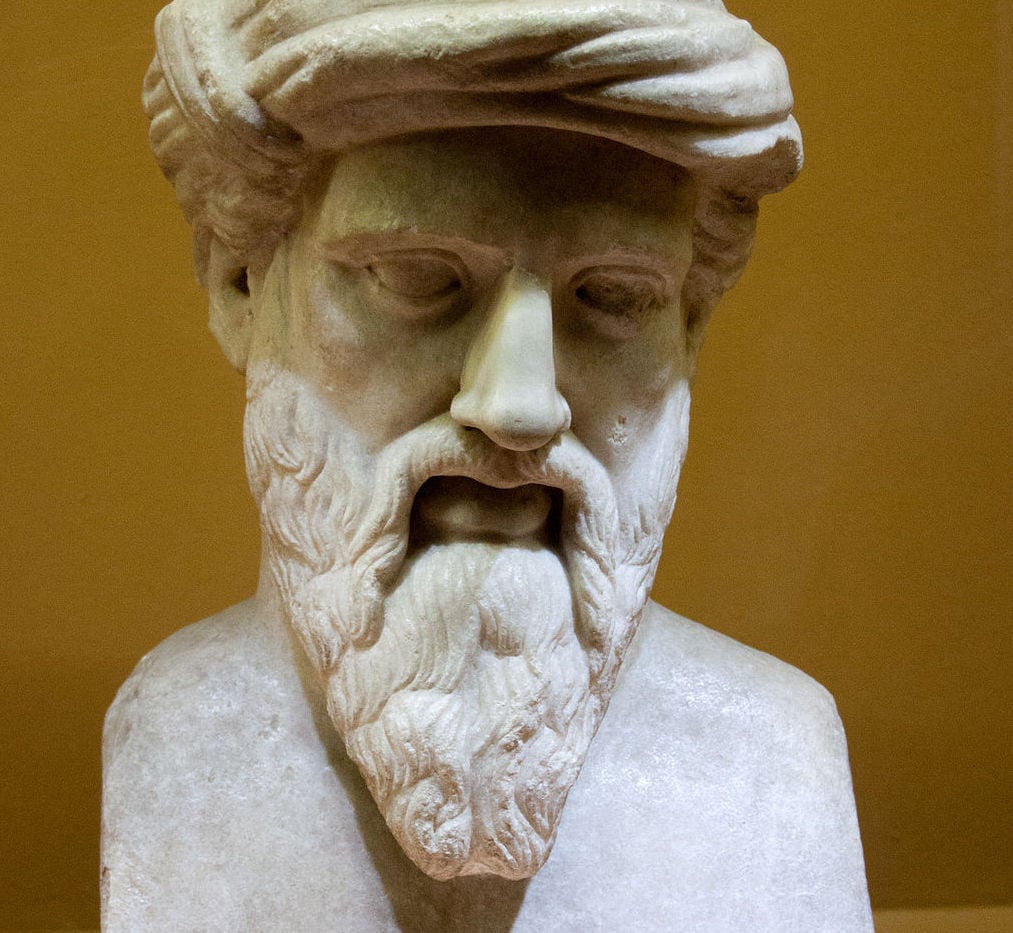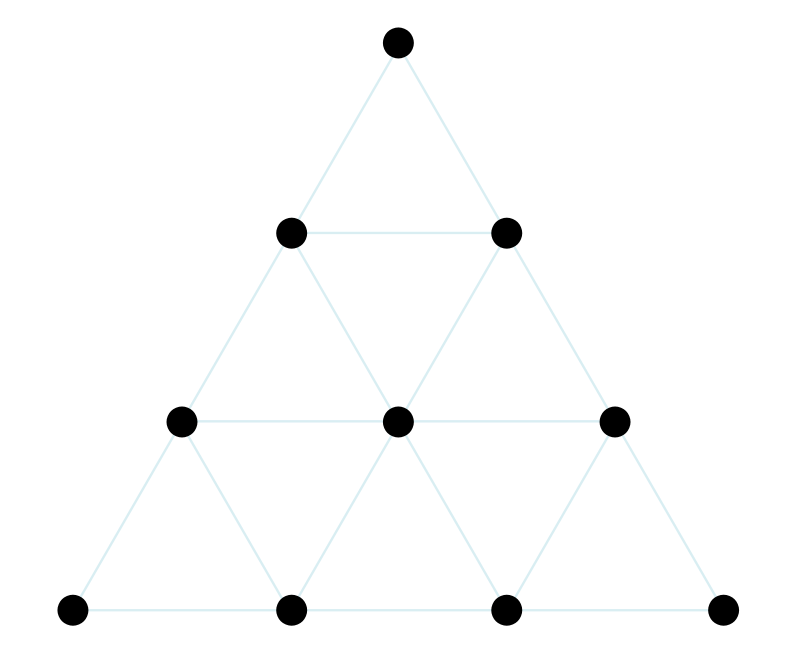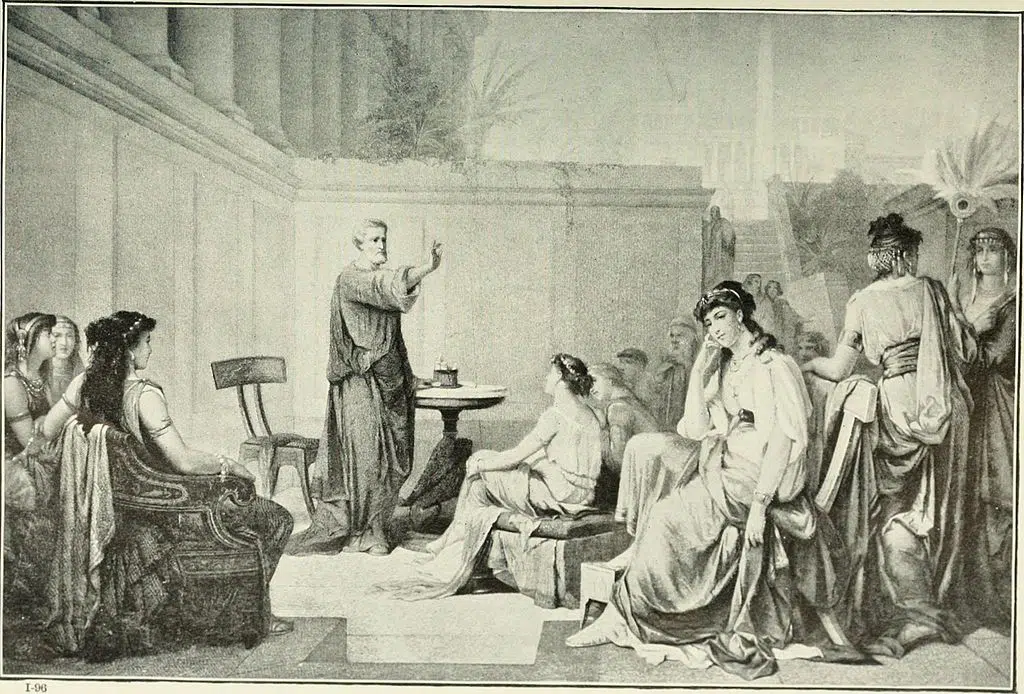
A mystery has apparently been solved regarding a clay tablet that was discovered in the late 1800s as an Australian archaeologist claims it shows an element of Pythagoras’ math, called Pythagorean triples, were used many centuries before the Greek mathematician was born.
Pythagoras, a native of the Greek island of Samos and a brilliant philosopher whose mind ranged far and wide, was born around 580 BC.
His Pythagorean theorem explains the fundamental relation in Euclidean geometry among the three sides of a right triangle. He may have also devised the doctrine of musica universalis, which holds that the planets move according to mathematical equations and thus resonate to produce an inaudible symphony of music.

However, classical historians believe it is possible that these concepts may have stemmed from earlier thinkers. What is known for certain is that Pythagoras formed a school of philosophy in Croton, in what is now Italy; he had many followers and he taught both philosophy and mathematics.
Now it seems the world’s oldest example of applied geometry may have been discovered by way of this small, unassuming 3700-year-old tablet, which has been sitting in a museum in Istanbul since the 1800s.
Known as Si.42705, the tablet was the focus of recent research by mathematician and lead researcher Dr. Daniel Mansfield from the University of South Wales’ School of Mathematics and Statistics.
Found in what is now central Iraq in the late 1800s, Si.427 is now believed to be the oldest known example of applied geometry. In a study just published in Foundations of Science, Mansfield’s findings put a bit of a monkey wrench into the history of mathematics.
“Si.427 dates from the Old Babylonian (OB) period – 1,900 to 1,600 BC,” Mansfield says.

“It’s the only known example of a cadastral document from the Old Babylonian period, which is a plan used by surveyors define land boundaries. In this case, it tells us legal and geometric details about a field that’s split after some of it was sold off.”
Incredibly, this ancient tablet contains what are now known as “Pythagorean triples” to make accurate right angles in a land survey which is portrayed on its surface.
Use of Geometry Over One Thousand Years Before Pythagoras
“The discovery and analysis of the tablet have important implications for the history of mathematics,” Dr. Mansfield points out. “For instance, this is over a thousand years before Pythagoras was born,” he states in an interview with Turkey’s Anadolu Agency.
Back in 2017, Mansfield posited the theory that another fascinating tablet, dubbed Plimpton 322, originating from that same time period, was a type of trigonometric table that had never before been seen.
“It is generally accepted that trigonometry – the branch of maths that is concerned with the study of triangles – was developed by the ancient Greeks studying the night sky in the second century BC,” Mansfield admits.
However, he says, “the Babylonians developed their own alternative ‘proto-trigonometry’ to solve problems related to measuring the ground, not the sky.”
“A Whole Zoo of Right Triangles” Predates Pythagoras
Perhaps most incredibly, the newly-interpreted tablet called Si.427 predates even the Plimpton tablet — and may even have served as the prompt to create the later tablet as it posed difficult mathematical problems that needed to be solved for an accurate measurement of land.
“There is a whole zoo of right triangles with different shapes. But only a very small handful can be used by Babylonian surveyors. Plimpton 322 is a systematic study of this zoo to discover the useful shapes,” Mansfield states.
Four years ago, Mansfield’s team of researchers investigated the purpose of the Plimpton 322, positing that it most likely had some practical purpose, which may have included the construction of major public buildings, such as palaces or temples, or possibly canals — or in surveying land.
“With this new tablet, we can actually see for the first time why they were interested in geometry: to lay down precise land boundaries,” Mansfield says conclusively.
“This is from a period where land is starting to become private – people started thinking about land in terms of ‘my land and your land’, wanting to establish a proper boundary to have positive neighborly relationships. And this is what this tablet immediately says. It’s a field being split, and new boundaries are made.”
Land Surveying in Ancient Babylon Recorded on Several Tablets from the Era
Mansfield adds that his theory is backed up with evidence supplied from other tablets from that same era, which make mention of land surveying.
“Another tablet refers to a dispute between Sin-bel-apli – a prominent individual mentioned on many tablets including Si.427 – and a wealthy female landowner.
“The dispute is over valuable date palms on the border between their two properties. The local administrator agrees to send out a surveyor to resolve the dispute. It is easy to see how accuracy was important in resolving disputes between such powerful individuals.”
Mansfield states that the use of such sophisticated geometry shows that the ancient Babylonians had a true understanding of these principles.
“Nobody expected that the Babylonians were using Pythagorean triples in this way,” he admits. “It is more akin to pure mathematics, inspired by the practical problems of the time.”
For those whose memories of high school geometry are a little hazy, we can determine an accurate right angle by making a rectangle with sides 3 and 4, and a diagonal 5. These special numbers are referred to as the 3-4-5 “Pythagorean triple.”
Any rectangle having these measurements has right angles that are mathematically perfect. This concept, used by ancient surveyors, is still used today.
“Proto-trigonometery” used by Babylonians
“The ancient surveyors who made Si.427 did something even better: they used a variety of different Pythagorean triples, both as rectangles and right triangles, to construct accurate right angles,” Mansfield states.
A problem was posed by the Babylonian numbering system, however, which used a base of 60. In this system, it is difficult to work with prime numbers larger than five.
“This raises a very particular issue – their unique base 60 number system means that only some Pythagorean shapes can be used,” Mansfield explains, adding “It seems that the author of Plimpton 322 went through all these Pythagorean shapes to find these useful ones.
“This deep and highly numerical understanding of the practical use of rectangles earns the name ‘proto-trigonometry’ but it is completely different from our modern trigonometry involving sin, cos, and tan.”
Additional Numbers on Tablet Served Unknown Purpose
The tablet known as Si.427 was unearthed by researchers during the Sippar excavations in the province of Baghdad in 1894. Mansfield’s interest in it was first piqued when he read about it in excavation records from the time.
“It was a real challenge to trace the tablet from these records and physically find it – the report said that the tablet had gone to the Imperial Museum of Constantinople, a place that obviously doesn’t exist anymore.
“Using that piece of information, I went on a quest to track it down, speaking to many people at Turkish government ministries and museums, until one day in mid-2018 a photo of Si.427 finally landed in my inbox,” he explains.
“That’s when I learned that it was actually on display at the museum. Even after locating the object, it still took months to fully understand just how significant it is, and so it’s really satisfying to finally be able to share that story.”
Mansfield’s next quest is to discover any other possible applications the Babylonians used their proto-trigonometry for.
Of course, archaeology is endlessly fascinating and it takes us down one rabbit hole after another, so there are always new leads to pursue.
On the back Si.427, at the very bottom of the clay tablet, the base-60 number “25:29” is written large, with no accompanying clues as to its meaning.
Mansfield says “I can’t figure out what these numbers mean – it’s an absolute enigma. I’m keen to discuss any leads with historians or mathematicians who might have a hunch as to what these numbers trying to tell us!”
See all the latest news from Greece and the world at Greekreporter.com. Contact our newsroom to report an update or send your story, photos and videos. Follow GR on Google News and subscribe here to our daily email!



